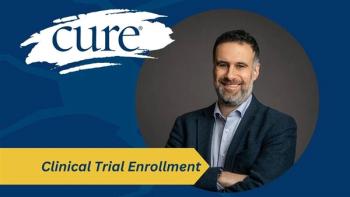
Trying the "Kitchen Sink" to treat Brain Cancer
There are a number of treatment methods being explored to treat glioblastoma.
With so many challenges presented by glioblastoma’s heterogeneity and the blood-brain barrier, it makes sense that researchers are investigating every possibility to develop new treatments for the cancer.
“It’s a serious disease with an unmet need,” says Rimas Lukas, M.D., associate co-chief of the Neuro-Oncology Division at Northwestern University.
Radiation, "our best therapy," may be improved with more precise methods such as proton therapy or changes to dose and treatment duration, says Howard Fine, M.D., founding director of the Brain Tumor Center at Weill Cornell Medical Center in New York City. In addition, he says, chemotherapy, the only class of drugs that really works for glioblastoma, remains a strong avenue to explore. The hundreds of other therapies researchers are exploring fall into approximately a dozen categories:
Molecularly targeted therapies, such as Velcade (bortezomib), target specific molecules, or proteins, inside tumor cells or on their surfaces, disabling their cancer-driving activities.
Immunotherapy research for glioblastoma has looked at drugs already approved for other cancers as well as new therapies. Many target checkpoints, the self-regulatory mechanisms that keep the immune system from going into overdrive. Disabling these checkpoints helps the immune system to recognize and fight cancers.
Targeting one such checkpoint, the PD-1/PD-L1 pathway, are PD-1 inhibitors Opdivo (nivolumab) and Keytruda (pembrolizumab) and PD-L1 inhibitors Tecentriq (atezolizumab) and Imfinzi (durvalumab). Another pair of drugs, Yervoy (ipilimumab) and tremelimumab, target CTLA-4, another protein that down-regulates the immune system. A similar immune-suppressing enzyme, IDO, is targeted by the drugs indoximod and epacadostat, both also being considered for glioblastoma. A slightly different approach is targeting CSF1R, expressed on tumor-invading macrophages (which are certain kinds of white blood cells), and contributing to the immune-suppressed tumor microenvironment. Yet many of these are in the early stages of research or haven’t shown encouraging results.
Viral therapies involve using certain deactivated viruses, such as adenovirus, herpes virus or polio virus, to attack the tumor, either with gene therapy or oncolytic virus therapy. With gene therapy, a weakened virus cannot replicate enough to infect the person, but is used as a vehicle to carry genes with instructions for targeting some part of the cancer. Oncolytic virus therapy is nearly the opposite: Instead of a weakened virus carrying in DNA, the virus itself is genetically engineered to infect and kill tumor cells without harming healthy, normal cells. At least 15 oncolytic viruses have been tested for the treatment of glioblastoma. One of the furthest along is the polio virus PVS-RIPO. In a phase 1 trial last year, 24 percent of two dozen patients survived two years after treatment, and three patients survived three years.
Alternate drug delivery methods, aim to overcome the blood-brain barrier and deliver drugs where they need to go. One such FDA-approved agent is Gliadel, the “glio wafer” that slowly leaks out the chemotherapy carmustine after implantation during a resection of the tumor. Another method, convection-enhanced delivery, would use implanted catheters to deliver drugs.
Targeting the tumor's unique metabolism so that it starves is another avenue. IDH-1, an enzyme related to metabolism, is one potential target.
Angiogenesis inhibitors target the blood vessels that feed a tumor in order to choke off its blood supply. Aside from existing anti-angiogenic drugs, such as Avastin (bevacizumab), which targets the protein VEGF, different drugs in this class may work better when combined with other therapies. A potentially more promising option, a drug called ofranergene obadenovec, or VB-111, uses gene therapy to target angiogenic cells and boost the immune response against tumor cells. Data from a phase 3 study pairing it with Avastin aren’t available yet.
Epigenetic drugs target the proteins that encase genes in tumor cells, rather than the genes themselves. Epigenetic traits are those not encoded in genes that nonetheless pass from one cell to another during cell division. Andrew Chi, M.D., Ph.D., director of neuro-oncology at NYU Langone's Perlmutter Cancer Center and codirector of Langone's Brain Tumor Center, describes them like beads on a string: the string is the DNA, and the beads are the proteins that control how genes are expressed. “Sometimes all the beads in cancer cells are abnormal, where some are always open or some are stuck and can never open,” Chi says. “Maybe we can exploit that and try to open up those bad proteins that are stuck or try to close them.” One such protein target is the enzyme EZH2, present in excessive amounts in some cancers. More than a half dozen EZH2 inhibiting drugs are in preclinical or phase 1 or 2 development.
Optune is the only tumor-treating field therapy available and uses a novel technique. It’s a set of arrays in a skull cap, applied directly to the scalp, that deliver two electrical fields situated perpendicular to one another. The part of the cell that prepares genetic material for cell division has polarity, Lukas explains, and “the electrical fields (crossing each other) cause enough havoc that the cell reads that as too much injury to its genetic framework, so it dies off in cell suicide.”
But buy-in from many oncologists is shaky. “The skeptics are waiting for more data,” Chi says. Some of the skepticism comes from the mystery of its mechanism, which “remains uncertain to a number of investigators in the field,” Fine says.
Finally, there’s a group of treatments that don’t quite fit into any categories, Chi says, such as stem cell inhibitors that attempt to force cancer cells to differentiate so that they stop proliferating. “Very little works,” Fine says, “so it’s very valid to try the kitchen sink of novel approaches — as long as they are safe, based on good scientific rationale and preclinical data, performed in well-designed clinical trials and the patients are well informed of the potential risks and benefits.”





